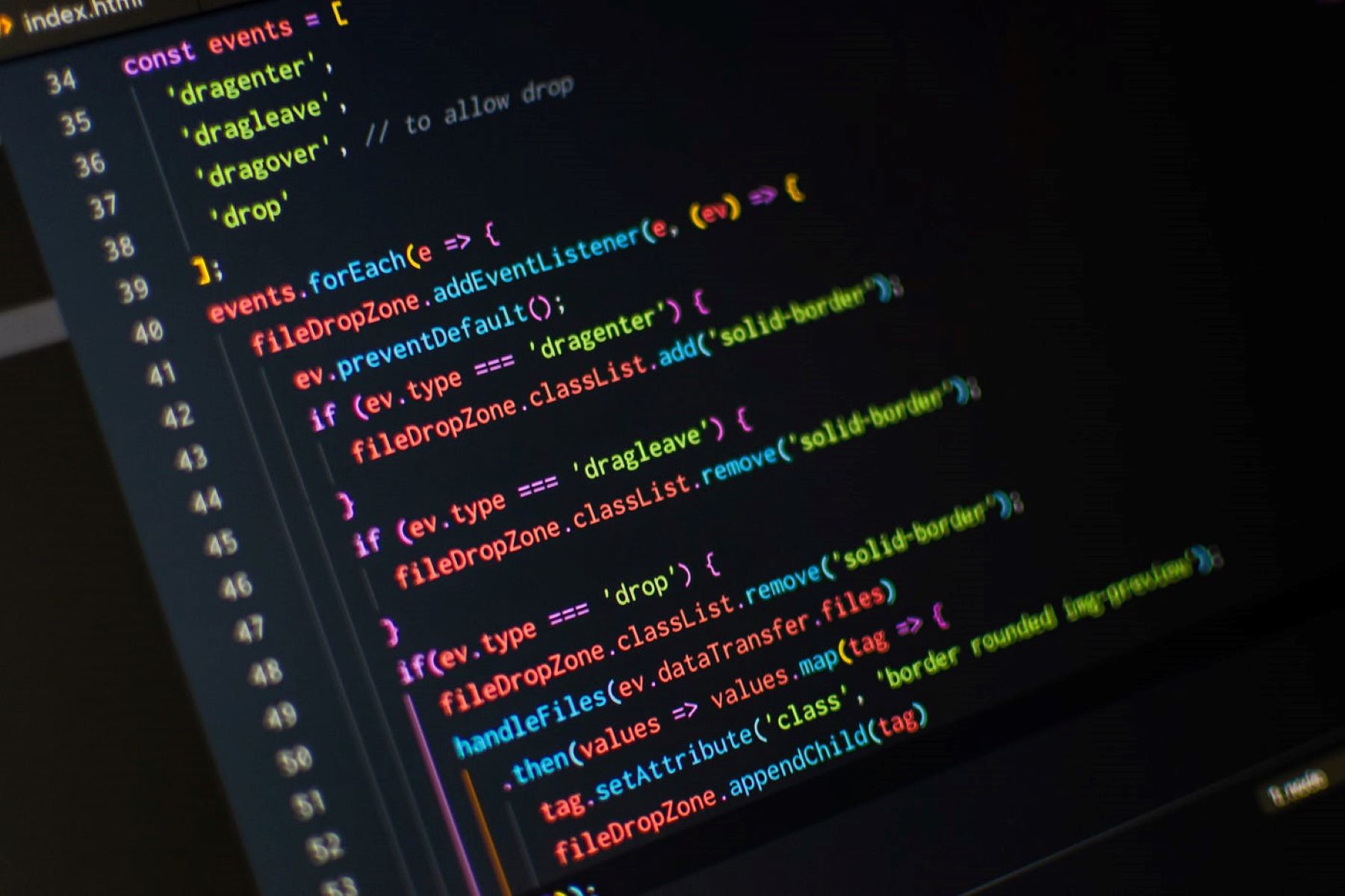Home>Technology and Computers>The Key Difference Between Strcpy() And Strncpy() Functions In C++


Technology and Computers
The Key Difference Between Strcpy() And Strncpy() Functions In C++
Published: February 9, 2024
Learn the key difference between the strcpy() and strncpy() functions in C++ and how they are used in technology and computers. Understand their distinct functionalities and applications.
(Many of the links in this article redirect to a specific reviewed product. Your purchase of these products through affiliate links helps to generate commission for Regretless.com, at no extra cost. Learn more)
Table of Contents
Introduction
In the realm of C++ programming, understanding the nuances of different functions is crucial for crafting efficient and secure code. Two such functions, strcpy() and strncpy(), are fundamental to string manipulation in C++, yet they possess distinct characteristics that warrant careful consideration. By delving into the intricacies of these functions, developers can bolster their proficiency in handling strings, thereby fortifying the robustness and reliability of their code.
As we embark on this exploration, it's essential to grasp the unique attributes and applications of strcpy() and strncpy(). By discerning the key differences between these functions, programmers can make informed decisions about when and how to employ them, ultimately optimizing the performance and integrity of their C++ programs. Let's delve into the depths of strcpy() and strncpy() to unravel their distinct functionalities and intricacies, equipping ourselves with the knowledge to wield them effectively in our programming endeavors.
Overview of strcpy() Function
The strcpy() function in C++ is a quintessential tool for string manipulation, playing a pivotal role in the seamless handling and manipulation of character arrays. Its primary function is to copy a string from a source to a destination, thereby enabling the replication of a string's content. This function operates by iterating through each character of the source string and assigning it to the corresponding position in the destination string until the null-terminating character '�' is encountered. This mechanism ensures the faithful replication of the source string in the destination string, preserving its integrity and structure.
One of the defining features of the strcpy() function is its simplicity and straightforwardness. Its syntax is concise and intuitive, typically taking two parameters: the destination string and the source string. This uncomplicated structure enhances the ease of use and readability, making it accessible for programmers of varying expertise levels. Moreover, the strcpy() function is instrumental in scenarios where the length of the source string is known and the destination string is large enough to accommodate it, as it does not impose constraints on the length of the destination buffer.
However, it is imperative to exercise caution when utilizing the strcpy() function, as it does not perform bounds checking. This means that if the destination buffer is not large enough to accommodate the source string, it can lead to buffer overflow, a critical vulnerability that can compromise the stability and security of the program. Therefore, meticulous attention must be paid to ensure that the destination buffer has sufficient capacity to accommodate the source string, mitigating the risk of buffer overflow.
In essence, the strcpy() function serves as a foundational element in C++ programming, facilitating the seamless replication of strings and underpinning various string manipulation operations. Its straightforward syntax and fundamental functionality make it an indispensable asset for developers seeking to manipulate character arrays efficiently and securely. By comprehending the nuances of the strcpy() function, programmers can harness its capabilities to wield strings with precision and efficacy, laying a solid foundation for robust and resilient C++ programs.
Overview of strncpy() Function
The strncpy() function in C++ stands as a stalwart in the arsenal of string manipulation tools, offering a specialized approach to copying strings that distinguishes it from its counterpart, strcpy(). Unlike strcpy(), which does not impose constraints on the length of the destination buffer, strncpy() provides a mechanism for explicitly specifying the maximum number of characters to be copied from the source string to the destination string. This characteristic endows strncpy() with a heightened level of control and precision, particularly in scenarios where stringent bounds checking and precise string truncation are imperative.
The syntax of strncpy() typically entails three parameters: the destination string, the source string, and the maximum number of characters to be copied. This distinctive structure empowers developers to dictate the exact number of characters to be copied from the source string to the destination string, affording a level of control and predictability that is indispensable in scenarios where the length of the source string is known and the destination buffer requires precise manipulation.
One of the noteworthy attributes of strncpy() lies in its ability to mitigate the risks associated with buffer overflow, a vulnerability that plagues many string manipulation operations. By allowing developers to specify the maximum number of characters to be copied, strncpy() averts the peril of overflowing the destination buffer, thereby fortifying the robustness and security of the program. This capability is particularly valuable in scenarios where the exact length of the source string is known, enabling developers to tailor the copying process to align with the specific requirements of the destination buffer.
Furthermore, the strncpy() function excels in scenarios where precise string truncation is essential. In cases where the source string exceeds the length of the destination buffer, strncpy() adeptly truncates the source string to fit the specified length, ensuring that the destination buffer remains unscathed by buffer overflow while accommodating a truncated yet coherent representation of the source string. This precision in string truncation is instrumental in maintaining the integrity and stability of the destination buffer, preempting potential anomalies that may arise from an excessively long source string.
In essence, the strncpy() function embodies a nuanced and meticulous approach to string manipulation, offering developers a level of control and precision that is indispensable in scenarios where stringent bounds checking, precise string truncation, and buffer overflow mitigation are paramount. By comprehending the intricacies of the strncpy() function, programmers can harness its capabilities to manipulate strings with exactitude and security, laying a solid foundation for resilient and dependable C++ programs.
Key Differences Between strcpy() and strncpy() Functions
The key disparities between the strcpy() and strncpy() functions in C++ stem from their distinct approaches to string manipulation, particularly concerning the handling of destination buffers and the precision of string copying. Understanding these disparities is pivotal for developers seeking to wield these functions effectively and judiciously in their programming endeavors.
Length Constraint:
One of the fundamental distinctions between strcpy() and strncpy() lies in their treatment of the destination buffer length. While strcpy() does not impose constraints on the length of the destination buffer, thereby leaving it susceptible to buffer overflow if the source string exceeds the buffer's capacity, strncpy() offers a mechanism for explicitly specifying the maximum number of characters to be copied from the source string to the destination string. This capability endows strncpy() with a heightened level of control and precision, mitigating the risks associated with buffer overflow and affording developers the means to tailor the copying process to align with the specific requirements of the destination buffer.
Precision in String Truncation:
Another notable difference between strcpy() and strncpy() manifests in their handling of string truncation. In scenarios where the source string exceeds the length of the destination buffer, strcpy() does not provide a mechanism for precise truncation, potentially leading to buffer overflow and compromising the integrity of the destination buffer. In contrast, strncpy() excels in precise string truncation, adeptly truncating the source string to fit the specified length, thereby ensuring that the destination buffer remains unscathed by buffer overflow while accommodating a truncated yet coherent representation of the source string. This precision in string truncation fortifies the stability and reliability of the destination buffer, preempting potential anomalies that may arise from an excessively long source string.
Control and Predictability:
The syntax and functionality of strncpy() afford developers a heightened level of control and predictability compared to strcpy(). By allowing developers to specify the maximum number of characters to be copied from the source string to the destination string, strncpy() empowers them to dictate the exact parameters of the copying process, aligning it with the specific requirements of the destination buffer. This level of control is instrumental in scenarios where stringent bounds checking, precise string truncation, and buffer overflow mitigation are paramount, enabling developers to manipulate strings with exactitude and security, thereby laying a solid foundation for resilient and dependable C++ programs.
In essence, the disparities between strcpy() and strncpy() encapsulate their distinct approaches to string manipulation, with strncpy() affording a heightened level of control, precision, and security compared to strcpy. By comprehending these disparities, developers can leverage the unique capabilities of each function to optimize the performance and integrity of their C++ programs.
Conclusion
In conclusion, the thorough exploration of the strcpy() and strncpy() functions in C++ illuminates their distinctive attributes and applications, underscoring the pivotal role they play in string manipulation and the crafting of robust, secure code. The fundamental disparities between these functions encapsulate their unique approaches to string copying, with strcpy() offering simplicity and straightforwardness, while strncpy() provides a heightened level of control, precision, and security.
The strcpy() function stands as a foundational element in C++ programming, facilitating the seamless replication of strings and underpinning various string manipulation operations. Its uncomplicated syntax and fundamental functionality make it an indispensable asset for developers seeking to manipulate character arrays efficiently and securely. However, the absence of length constraints and precise string truncation mechanisms exposes it to the risk of buffer overflow, necessitating meticulous attention to buffer capacity to avert potential vulnerabilities.
On the other hand, the strncpy() function embodies a nuanced and meticulous approach to string manipulation, offering developers a level of control and precision that is indispensable in scenarios where stringent bounds checking, precise string truncation, and buffer overflow mitigation are paramount. Its capability to explicitly specify the maximum number of characters to be copied from the source string to the destination string empowers developers to tailor the copying process with exactitude, fortifying the stability and reliability of the destination buffer.
By comprehending the nuances of strcpy() and strncpy(), programmers can harness their capabilities to wield strings with precision and efficacy, laying a solid foundation for resilient and dependable C++ programs. It is imperative for developers to weigh the trade-offs and considerations associated with each function, aligning their choice with the specific requirements of the programming context to optimize the performance and integrity of their code.
In essence, the comprehensive understanding of strcpy() and strncpy() equips developers with the knowledge and discernment to make informed decisions about when and how to employ these functions, ultimately contributing to the development of robust, secure, and efficient C++ programs. As the programming landscape continues to evolve, the proficiency in leveraging the unique functionalities of strcpy() and strncpy() will undoubtedly empower developers to navigate the intricacies of string manipulation with finesse and precision, enriching the fabric of C++ programming with resilience and reliability.














